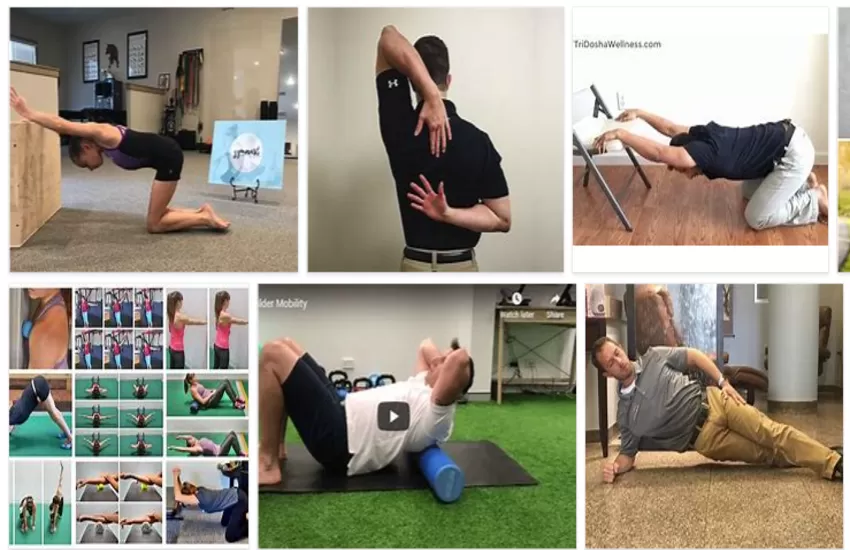Improving Shoulder Moability and Back Pain

Improving the ability to move your neck and shoulder is crucial for overall body health and quality of life. It is necessary to consult with a medical professional such as a chiropractor or osteopath if the pain in your shoulders continues or worsens. Most people suffer some degree of shoulder pain, but the pain is usually minor and easily treated. Shoulder movements do not cause pain, but muscle imbalances and other problems with the joints and surrounding muscles can cause shoulder pain. Neck and shoulder problems are very common for people over the age of sixty. The most common type of shoulder movement problem is impingement syndrome, which refers to the swelling of tendons or muscles at the base of the skull, resulting in pain.
Types of Shoulder Movement Problems. Many types of shoulder movement problems can be attributed to a variety of underlying conditions including mechanical problems with the joints, mechanical imbalances, soft tissue inflammation, or a combination of any of these conditions. Some of the more common causes of shoulder pain are rotator cuff injuries, frozen shoulder, and impingement.
There are many exercises that can be performed to improve shoulder mobility and relieve pain. These range from simple stretches to specific programs designed to strengthen and warm the muscles of your shoulder joints, tendons and ligaments. A variety of stretching exercises, using weights and medicine balls, and low-impact aerobic exercises can improve overhead mobility. The overhead mobility exercises can then be incorporated into a variety of fitness routines to help reduce back pain and increase shoulder mobility.
Exercises to Improve Shoulder Mobility - Start Now!
Shoulder Mapping is one of the best exercises for improving shoulder movement, as it forces you to really examine your whole shoulder joint. The rotator cuff is comprised of the tendons and ligaments that attach your shoulder blade to your humerus. By engaging these tendons and ligaments in exercises designed to strengthen them, you will help increase their strength and stability. Your upper back muscles, as well as the muscles of the shoulders, also benefit from this exercise as they help pull the arm through various movements and allow for increased shoulder freedom. By strengthening these areas, you will greatly improve your shoulder movement and posture.
This exercise works on two levels. First, as I just said, it strengthens your rotator cuff and aids in increasing shoulder stability. Second, it increases mobility, allowing your shoulders to move freely without pain. The pain that comes with shoulder injuries usually comes from these two areas. By strengthening them, you will help cut down on your risk for future injuries.
The shoulder-width-to-hip (WTH) test measures your shoulder width, while the lumbar spine angle measures the angle between your torso and the floor. If your spine angles to the right, you have a high risk of shoulder movement. WTH is often used in doctor's offices, and can easily be done at home. To do this exercise, simply stand with your feet hip distance apart, knees slightly bent, and your arms hanging by your sides. From here, you will want to look at your shoulders, but keep your gaze level.
The classic shoulder stability exercise, the overhead triceps raise, can also help increase shoulder mobility. As always, before you begin any exercise routine, speak to your doctor. Make sure he or she understands your goals and what you hope to achieve through the exercise. While a visit to the doctor's office is not always necessary to start and continue a shoulder exercise program, it is always helpful. Your physician can make sure you are doing the exercises correctly, which will result in fewer injuries.
A final exercise to improve shoulder mobility is the side lateral raise. You can use a doorway to place your feet, hips and shoulders together, and hold for ten seconds. Repeat ten times, then relax. This simple exercise, which strengthens the rotator cuff muscles and prevents atrophy, can go a long way toward relieving shoulder pain and preventing future injuries.
While these four exercises may seem simple, they require many movements in your shoulder, upper back and torso. This is why it is important to work with a physical therapist, osteopath or chiropractor. They can make sure you are doing the exercises correctly, and that you are following an exercise routine that will get you the best results over time. Exercising on a regular basis can be the key to improving shoulder movement and mobility, and can also strengthen your rotator cuff muscles and prevent injuries.








